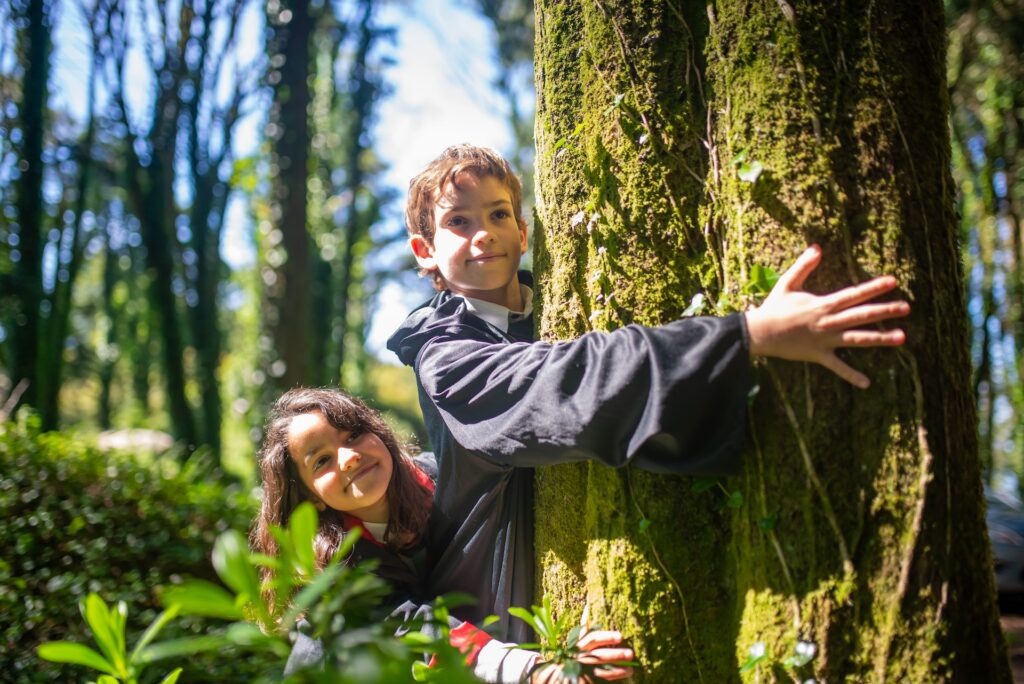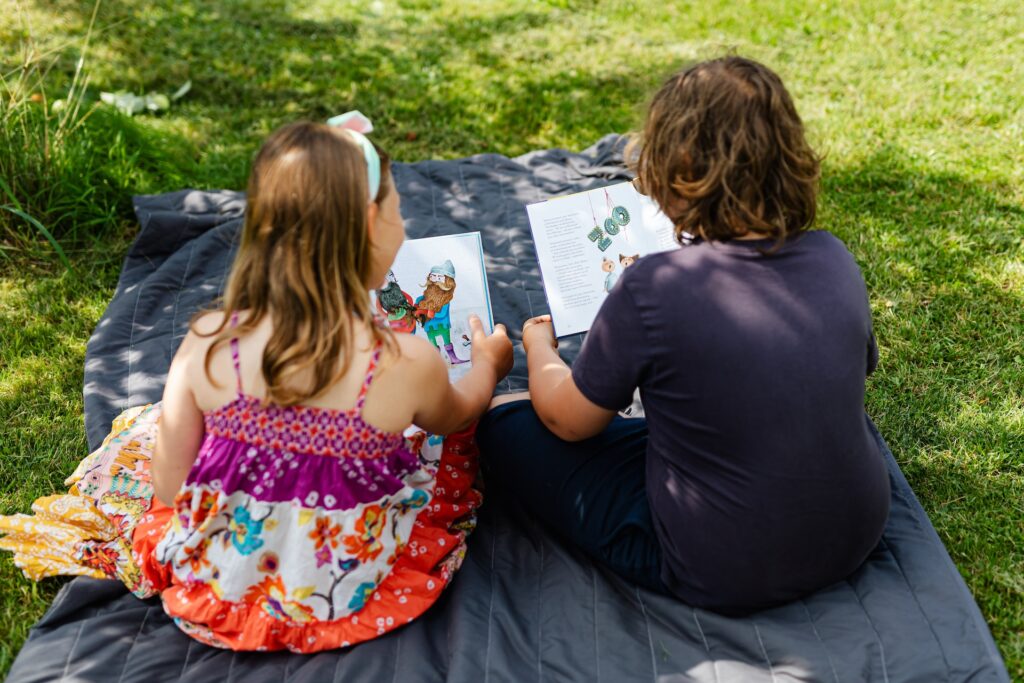How to Write a Children's Book Families Will Love
Children’s books are a huge part of our lives. They’re the first books we read to our kids. They are the escapes we read to our children over and over again before heading to bed. All you need is a little imagination to write a children’s book.
With that said, it’s important to ensure that you learn how to write a children’s book that a family will love.
This can be tricky because not all families want the same things in their books. Some kids prefer fiction, while others prefer non-fiction. Some books for children involve stories with lots of adventure, while others are more about real-life experiences.
The key to how to write a children’s book is unlocking words and characters that invite imagination and wonder. It doesn’t matter if you seek an age-appropriate book through traditional publishers or create a new story full of illustrations for middle-grade readers. Writing a children’s book is an excellent way to have fun, create a legacy, and inspire generations of kids to read.
Before You Start Writing
Before you start writing, there are a few things to consider. First, you’ll need to research the market and see what’s already out there. What kinds of children’s books do people love? Find out which ones are selling well and read them all. This will help you understand what makes certain stories work better than others.
Next, decide on your audience—who will be reading your book? Is it for preschoolers or middle schoolers? Are they boys or girls?
Once you’ve figured that out, consider how much detail should go into creating relatable characters (and other aspects) of their lives. The more specific these details are from a kid’s perspective (not an adult’s), the less likely readers will find them boring or hard to follow.
Finally, get some beta readers in the form of kids you know. This could be middle-grade readers from your close family and friends or a local school with a broad age range in the target market you want.
You should also find a quiet place to work with the best writing supplies possible. The more the stage is set for inspiration, the better you’ll be able to tell the story you’ve always wanted.

About the Market
When you’re learning how to write a children’s book, knowing who your audience is and the content of your story is extremely important.
As a result, many new authors make the mistake of crafting books for themselves rather than their intended readership. Unfortunately, this can lead to an abundance of adult themes and language that may not appeal to children.
To avoid this pitfall, knowing how long your story should be and what kind of cover style might best suit it is helpful. You’ll also want to consider whether or not there’s a market for your story before investing time or money into developing it further.
As a general rule, you’re looking at a market like:
- 0-6 Years Old | Picture Books | 0-100 words
- 5-7 Years Old | Early Readers | 100-10,000 words
- 7-9 Years Old | Chapter Books | 5,000-20,000 words
- 9-12 Years Old | Middle Grade | 10,000-55,000 words
- 12-18 Years Old | Young Adult Novels | 40,000-70,000 words
There are also specific niche markets within each of these readers. For example, many in the traditional publishing world avoid things like children’s book authors who focus on minorities, kids with special needs, or character development that involves controversial topics.
In reality, these areas that may seem too adult are perfect for slightly older children who want to learn more about life in a fun and engaging way. This means walking a fine line between captivating illustrations and target age terminology, as well as the content that builds a great children’s book. These steps on how to write a children’s book will help you find that path.
Steps to Writing a Children's Book

1 - Decide on the Audience
Your intended audience is your first need to consider when writing a children’s book. Regarding marketing, age and gender are two of the most important factors determining what a book will sell. This is because parents and teachers tend to buy books for their children based on those guidelines.
If you’re looking to get your name out there as an author, writing for boys and girls ages 6-10 may be an excellent start. If nothing else, this group will be very cost-effective for publishing companies such as Amazon as they are so high in demand.
Don’t try to be Agatha Christie out of the block. Instead, stick to the topics you enjoy and have fun. Any group of children’s book authors will tell you the spirit of your book will matter almost as much as the illustrations.
2 - Learn from What Works
You’ve got to start with some studying. You’re not going to create a children’s book that families love if you haven’t read lots of them.
Start by reading your genre and sort through the best sellers, looking for any commonality between them. What are their main characters like? What kind of stories do they tell? What language do they use, and what kind of themes emerge in their plots?
For example, if you’re creating a book about writing engaging poetry for kids, look at books like The Giving Tree or Where the Sidewalk Ends by Shel Silverstein. It is okay to use the tropes your target age group expects. In fact, that makes the writing a bit easier.

3 - Read Children's Books in Your Niche
If you want your book to be a success, it helps to know what works and what doesn’t. Reading children’s books from your niche is the best way to learn about the market and see what kinds of things are popular with readers.
This is a double-edged sword. Books like Harry Potter did not seem popular by a traditional publisher, yet was massively accepted by adult and children readers.
4 - Outline Your Initial Idea
Once you have an idea and a plot, outline your story. Include the age group(s) for your book, as well as the content of your book (how much violence and mature themes are appropriate).
You’ll also want to outline the characters’ backstories. You can add these details later in the writing process, but it’s helpful to have them mapped out at this stage, so you know where they need to be headed by the end of your story.
At this point in writing children’s books, it is crucial to outline what happens, why things happen, and how they affect each other – all elements of a theme.
Keep the central question in mind of “how would that character react,” and you should be fine.

5 - Create Engaging Details
Details help readers picture the story in their minds and make it more believable. You can even use elements to create an emotional connection with your audience by showing what a character thinks or feels.
Some examples of practical details are:
- When asking for directions, Auntie May tells you to turn left at the tree with purple blossoms, then right at the dog barking at a squirrel on his leash, then go straight until you see someone selling homemade lemonade from a stand on the corner (in other words: she’s giving precise instructions).
- When you push open Auntie May’s front door and enter her house, there’s a smell of cinnamon buns baking in the oven and applesauce simmering on the stovetop.
It is all about painting a picture and using relatable themes your readers will likely reflect on their experiences.
6 - Create Relatable Characters
People want to read about characters they can relate to, with similar interests and experiences. If you’re writing a picture book for young kids who love playing with trains, make sure other characters also love trains.
If one of your characters is an only child and another has five siblings, readers can identify with both perspectives if they’re well-written enough.
Try to put yourself back in the shoes of the younger version from years ago. What made you think people understood how, why, and what you were experiencing?

7 - Write Your First Draft
Although writing takes the most time, it is also the most fun. I love to write, and I promise that you will be glad you did it no matter how long it takes you to finish your book!
You have thought about your topic and decided what makes a good children’s book. So now it is time to get started on your first draft.
Many people think writing a rough draft means writing as fast as possible without editing or revising. That isn’t necessarily true.
Your rough draft will be awkward and messy, but that is the point. It is meant to have mistakes. The goal is to get everything down on paper so you have a foundation to work from as you edit.
8 - Edit and Revise
Once you’ve finished your first draft, it’s time to edit and revise. Remember, the more time spent on this step, the better the final product will be.
- Check for clarity and readability – Make sure your story is written in simple language that children can understand without reading through complex sentences or phrases. If any complicated concepts or topics need explaining in more detail, include them using analogies or metaphors, so they’re easy for kids (and adults) to comprehend.
- Check for accuracy – If you use factual statements or elements from known places in the world, you want to fact-check all of your stories. This way, the people who will relate the most will feel a sense of authenticity in your writing.
- Check for typos/grammatical errors – A typo can take you out of a story. You need to run your text through Grammarly, the Hemmingway Editor and re-read it a few times on your own.

9 - Get a Professional Editor
Editing is the most critical step in writing a children’s book. You’ve heard it before, but that doesn’t make it any less accurate. You can’t edit and rewrite your way to greatness. Professional editors will help you improve your writing, your story, and even how a reader perceives your book.
The process of getting an editor starts with finding one who matches both your style needs and budget. Some authors use freelancers from sites like Fiverr. Some hire editors on contract through their publishing company. The point is you need that professional development from an editor you trust. That is one of the critical steps for how to write a children’s book.
10 - Send to Beta Readers
You’ve done all the hard work of writing your book, but you’re not quite ready to send it out into the world. So a final step before publishing is sending it out to beta readers.
Beta readers are people who read your book and give feedback on how well they think it works as a story, whether there are any plot holes or confusing parts that need fixing, and anything else that comes up.
A good rule of thumb for how many beta readers you should send your book out to is at least four people—but if you can manage more than that, go for it!
The benefit of learning how to write a children’s book is that your beta readers can be a younger target audience. This means nieces, nephews, kids down the block, coworkers’ sons and daughters, and more.
The more feedback you get from others before publishing, the better off you’ll be in terms of making sure that your writing has been polished enough for publication.
You should also try to find some beta readers who have experience reading children’s stories (especially if yours is geared toward younger kids). This will help ensure they know what type of language and formatting works best with audiences like theirs.

11 - Hire an Illustrator & Layout Expert
Once your manuscript is ready, it’s time to hire an illustrator and layout expert. The illustrator will help you create a cover and illustrations for the book. The layout expert will help with the formatting of your story and ensure that everything looks beautiful on paper or screen.
They will need to read your book to get context for every artistic creation. Always ask for samples of the illustrator’s work before agreeing. Many people who hire illustrators for how to write a novel ensure they create 100% original, royalty-free work. The same is valid for how to write a children’s book.
12 - Publish & Promote
You’ve written your book. Now it’s time to publish it. If you want to make money from your book and make a living as an author, you must work with the most powerful publishing platform for children’s books: Amazon.
Whether working with traditional publishers or self-publishing, Amazon is a must-have for your platform needs.
If you can get an eBook version out as well, that will boost your potential sales figures.

Get Started Now!
Writing a children’s book is a rewarding experience. This isn’t a eulogy or short speech. This is the opportunity to dive into the imagination and have fun with different types of children’s books.
From early readers to young adults, learning how to write a children’s book is a vibrant landscape for you to explore.
The market for this type of literature is constantly growing, and there are many opportunities for new writers to get their start in this genre. Writing for kids doesn’t have to be complicated. Just follow these steps, and before long, you’ll be on your way!
